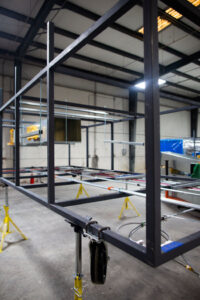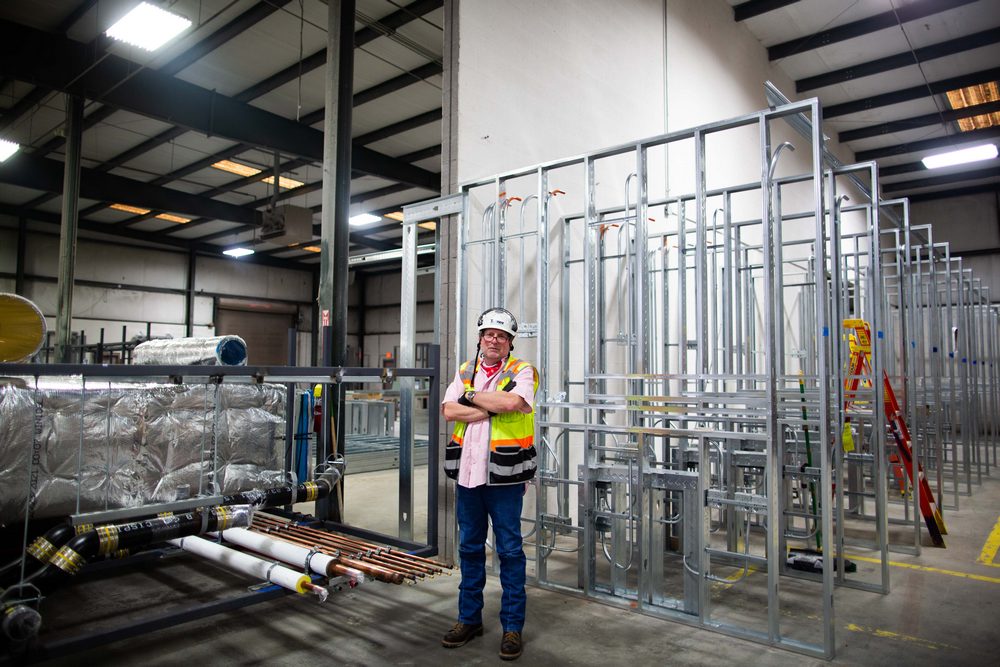Turner Construction Company’s Nashville, Tennessee office recently built a prefabrication shop to support the expansion project for Ascension Saint Thomas Midtown’s Surgery Center. Located approximately four miles from the project site, the facility is assembling headwalls, operating room walls, above-ceiling HVAC racks and scrub sink walls — all of which typically would be built onsite — in a controlled, offsite environment.
“Any project that has repetitive assets lends itself to prefabrication,” said Buddy Varney, Turner’s mechanical, electrical and plumbing superintendent. “It offers several benefits, including saving time on the schedule, providing a safer way to work and allowing better quality control and quality assurance because of the environment.”
“It made sense for us to do this on this particular project, since a lot of elements were the same,” said Nathan Hines, project manager. By securing an offsite warehouse, the project team was able to begin building these repetitive components several months ahead of the traditional timeframe.
 “We were also able to take those elements and build an exact replica of the rooms to see the parameters and logistics of moving one onsite. It shows up to the jobsite like a puzzle, already labeled, and just needs to be bolted in place,” Hines said. “This helps the end user, too since you’re basically creating an actual version of the mock-up. You can see if something needs to be adjusted before it gets onsite.”
“We were also able to take those elements and build an exact replica of the rooms to see the parameters and logistics of moving one onsite. It shows up to the jobsite like a puzzle, already labeled, and just needs to be bolted in place,” Hines said. “This helps the end user, too since you’re basically creating an actual version of the mock-up. You can see if something needs to be adjusted before it gets onsite.”
Turner is working in partnership with Lee Company to build the prefabricated components.
Varney and Hines agree that one of the biggest impacts of prefabrication is shaving time off the project schedule. On a typical jobsite, all materials are being delivered to the same place and several trades are working at once, which can lead to delays and potential rework. By keeping everything separate, the process is streamlined, delays are reduced, the site is cleaner and work on both the structure and systems can be done at the same time.
Especially in today’s market where manpower and the supply chain are at capacity, the project team can overcome hurdles without impacting the overall project schedule. Time saved on the schedule translates to speed to market for the client.
In addition to schedule impacts, prefabrication is safer for tradespersons building the components.
As for quality control, it is imperative that the proper QA/QC measures are implemented for the prefabrication process to be successful. The project team at Saint Thomas Midtown utilized an extensive, early 3D-coordination effort with trade partners, the design team and Turner. Through the general contractor’s ability to import the coordinated model into drone scans of existing space conditions, it provided a high level of certainty that prefabricated parts would be built and installed efficiently.





